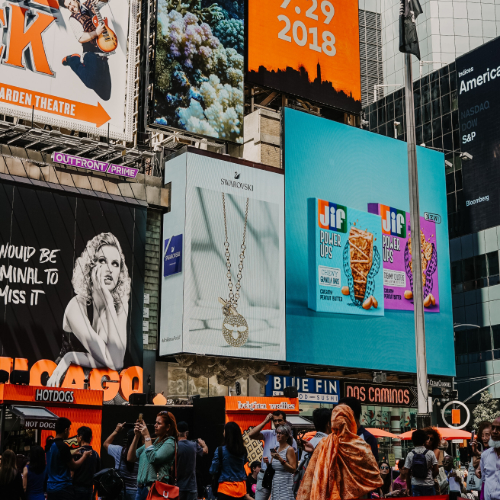As we recognise the evolutionary changes of marketing, there are growing challenges that are now facing the need for implementing traditional marketing techniques.
Our millennials and Gen Zs have grown up with technology and connectivity an everyday norm, and so traditional marketing is now often overlooked and or ignored. But whilst digital marketing has earned its place on the podium as an efficient and leading marketing tool for businesses, it’s important to look back and consider marketing’s original roots and implement traditional techniques.
It may not be at the forefront of our marketing minds, but traditional marketing hasn’t gone anywhere and still withholds value for business. Whilst digital methods may have boomed, traditional marketing techniques, such as billboards, TV, flyers or signage, remain a solid foundation for marketing strategies of both small and large businesses.
Think outside the realm of online advertising.
Traditional marketing techniques consist of anything outside of what we know to be online, such as broadcast, flyers, telephone or billboards. These are welcome methods that have defined the role of marketing within business and the need to set implement a variety of techniques that would not only set them aside from the competition, but connect them to more customers.
Whilst digital marketing continues to provide new ways to connect with new customers and capture their interest in innovative ways, traditional marketing maintains a key role in gaining exposure with new and a wide variation of audiences. Traditional marketing is also most effective at providing customers with information that is easily digestible, conversational and encourages brand recall.
Some of the most modern businesses, that consider themselves to be the most forward-thinking when it comes to marketing and implementing digital methods, will still unveil traditional techniques underneath the surface. Value and perception of products is increased by traditional methods; excitement and physical interaction with customers can be delivered and information can be provided in the clearest of formats.
So, what techniques are there to use?
Broadcast. This includes both TV and radio advertising, however TV remains the prominent leader within this field.
Face-to-face sales. Communicating your product through the voice of a salesperson can often provide the final details to complete a customer journey.
Event Marketing. From networking opportunities to product launches, this technique creates buzz through the power of experience.
Telemarketing. Hated by many, this method of cold-calling customers surprisingly continues to rule traditional marketing as a leader in creating warm leads or sales from clients.
Flyers. A popular method for handing out discounts and offers that also includes a valuable face-to-face opportunity to connect to customers and gauge reactions.
Print. An evolving element of traditional marketing which includes publications such as newspapers, magazines and newsletters.
Billboards. Regularly found on roadsides and urban areas, this is a visual technique that focuses on creative image over text.
Direct Mail. Advertising that is sent through the post directly to customers and can often target a refined demographic.
Digital marketing is here to stay but traditional marketing shouldn’t be forgotten. Whatever generation we are considering, traditional marketing still resonates with everyone and covers a lot of ground. And as traditional marketing techniques complement and support digital campaigns, implementing a strategy that combines and utilises both core marketing areas should really only be a successful one.
It’s this simple. Traditional marketing techniques should remain to be seen as an opportunity to maintain competitive advantage, utilise skilled marketing and perhaps gain the upper hand.






